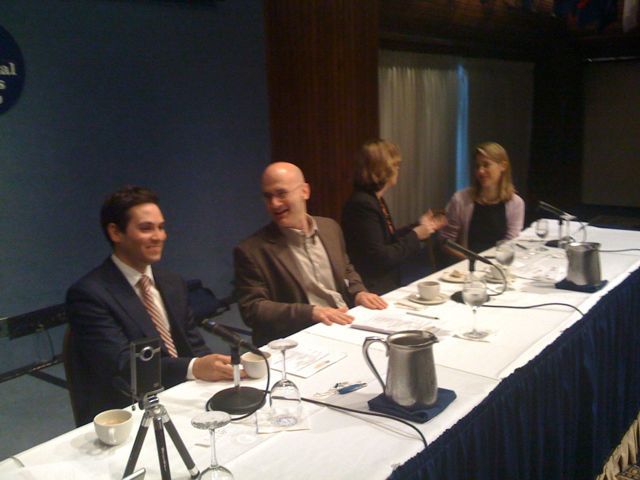Among the books I’ve been devouring recently is The Innovator’s Solution: Creating and Sustaining Successful Growth by Clayton Christensen. (I highly recommend it!) As I was listening to the unabridged audio version, the following statement — though read in the same measured tones as the rest of the tome — screamed its relevance:
by Clayton Christensen. (I highly recommend it!) As I was listening to the unabridged audio version, the following statement — though read in the same measured tones as the rest of the tome — screamed its relevance:
Core competence, as it is used by many managers, is a dangerously inward-looking notion. Competitiveness is far more about doing what customers value than doing what you think you’re good at. And staying competitive as the basis of competition shifts necessarily requires a willingness and ability to learn new things rather than clinging hopefully to the sources of past glory.
The challenge for incumbent companies is to rebuild their ships while at sea, rather than dismantling themselves plank by plank while someone else builds a new, faster boat with what they cast overboard as detritus.
The context of the statement is a discussion of companies that outsource elements of their product or service that they perceive to be less important. For example, in developing its PC in the early 1980s, IBM outsourced both its microprocessor (to Intel) and its operating system (to Microsoft.) This enabled IBM to catch up with Apple, but in the process it handed over the two most significant revenue streams and sources of profit to others. Today Intel and Microsoft are still earning billions of dollars a year from the PC business, while IBM is no longer making PCs.
This is relevant not only for our organizations and employers as a whole but also for us as individuals, and now I’m speaking directly to those involved professionally in communications, public relations, marketing, advertising or related disciplines.
I wish I had $82.43 for every time I’ve heard someone say, “All you need to do to use social media in your business is hire some young kids, just out of college. They really understand this stuff.” As the father of two relatively recent college graduates, I appreciate the job opportunities such a statement offers. But I offer a word of caution.
You need to understand social media yourself, and not dismiss them as being outside your “core competence.”
OK, that was 17 words. But the point is that as social media grow in importance over time, and as the audiences for mainstream media shrink, if you fail to adapt your “core competence” will become less relevant. That means less marketable.
By understanding social media, you will see how they can be applied to solve your business problems, or perhaps even as a whole new business model. Otherwise, as Christensen indicates, you will find yourself disrupted by low-end innovators.
To think more about the implications of disruptive innovation, get The Innovator’s Solution or anything else Christensen has written. I’m particularly looking forward to reading his books about health care and education.
To learn how to apply the sustaining (and in some cases disruptive) innovation of social media to your work, you’re at the right place already. Become a SMUGgle and we’ll learn and share applications together.

